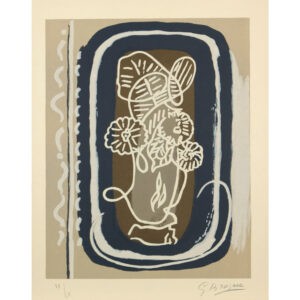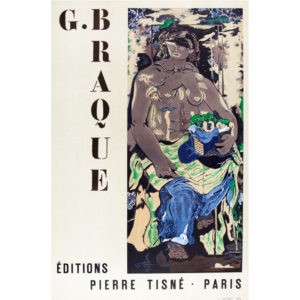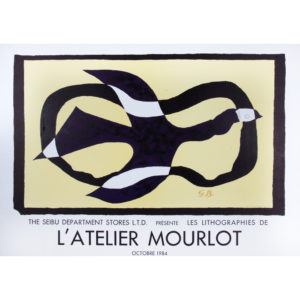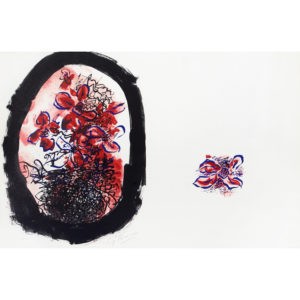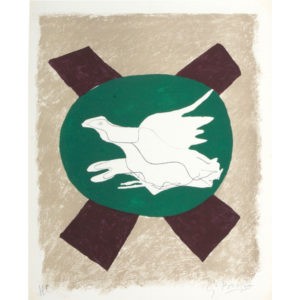Biography
Georges Braque was born in Argenteuil in 1882 into a family of house painters. When they moved to Le Havre, his parents enrolled him in evening classes at the École des Beaux-Arts, where the young Georges rubbed shoulders with his elders Othon Friesz or
Raoul Dufy. He learns the trade of decorative painter. Critics often associated his diligent style and use of materials with his training as a craftsman. In Paris, he studied under Charles Lhuillier at the École des Beaux-Arts for two years, obtaining a diploma in craftsmanship in 1901. The following year, at the Académie Humbert, he met
Marie Laurencin and
Francis Picabia.
His first period, of which few works remain, was strongly influenced by Impressionism. But when he discovered
Henri Matisse and
André DerainAt the same time, he produced Fauvist works, such as those he exhibited at the Salon des Indépendants in 1906.
In 1907, the retrospective
Paul Cézanne at the Salon d'Automne, then his encounter with
Pablo Picasso and his work
Les Demoiselles d'Avignon were a revelation for him. Braque creates
Standing nude (1907-1908), which inaugurated a long and fruitful dialogue with Picasso that would have a lasting impact on art history. Gradually, color disappeared in favor of analysis and the construction, then deconstruction, of objects in his paintings. Rejected at the 1908 Salon des Indépendants, Braque exhibited his work at the Galerie Kahnweiler. The critic Louis Vauxcelles described his work as "forms reduced to geometric patterns, to cubes": this was the beginning of Cubism. Braque became the leader of this movement alongside Picasso, and introduced the "papiers collés" technique: collages of newspapers, wallpapers and posters that form flat areas of paper.
Braque moved away from the illusionist rendering of painting, exploring all kinds of techniques that allowed him to play with the plastic force of objects. Among these, he was particularly interested in engraving; he owned his own press.
Wounded during the war, the artist was demobilized. His dialogue with Picasso was interrupted, and he became increasingly involved with other artists.
Juan Gris and
Henri Laurens. The war marked the definitive end of Braque's cubism.
After the war, the artist turned once again to engraving, illustrating
Roof slates by Pierre Reverdy, then in 1921,
The Theogony of Hesiod at the request of Ambroise Vollard. He produces his first color lithographs:
The Medusa Trap,
Eurybia and Eros. After a brief stint in naturalistic painting with the
Canéphoresthe artist returned to Greek subjects treated in engraving, with
Phaéton-Char IIIa 7-color lithograph by Mourlot for art collector and dealer Daniel-Henry Kahnweiler.
Georges Braque's work received international recognition when he was awarded the Grand Prix International at the Venice Biennale in 1948. Four years later, with the decoration of the ceiling of the Etruscan room at the Louvre Museum, he became the first artist to be exhibited at the Louvre in his lifetime.
At the end of his life, Georges Braque devoted most of his time to his work as a lithographer, illustrating poems by René Char.
Lettera Amorosa published in 1963.
He died in Paris on August 31, 1963.

